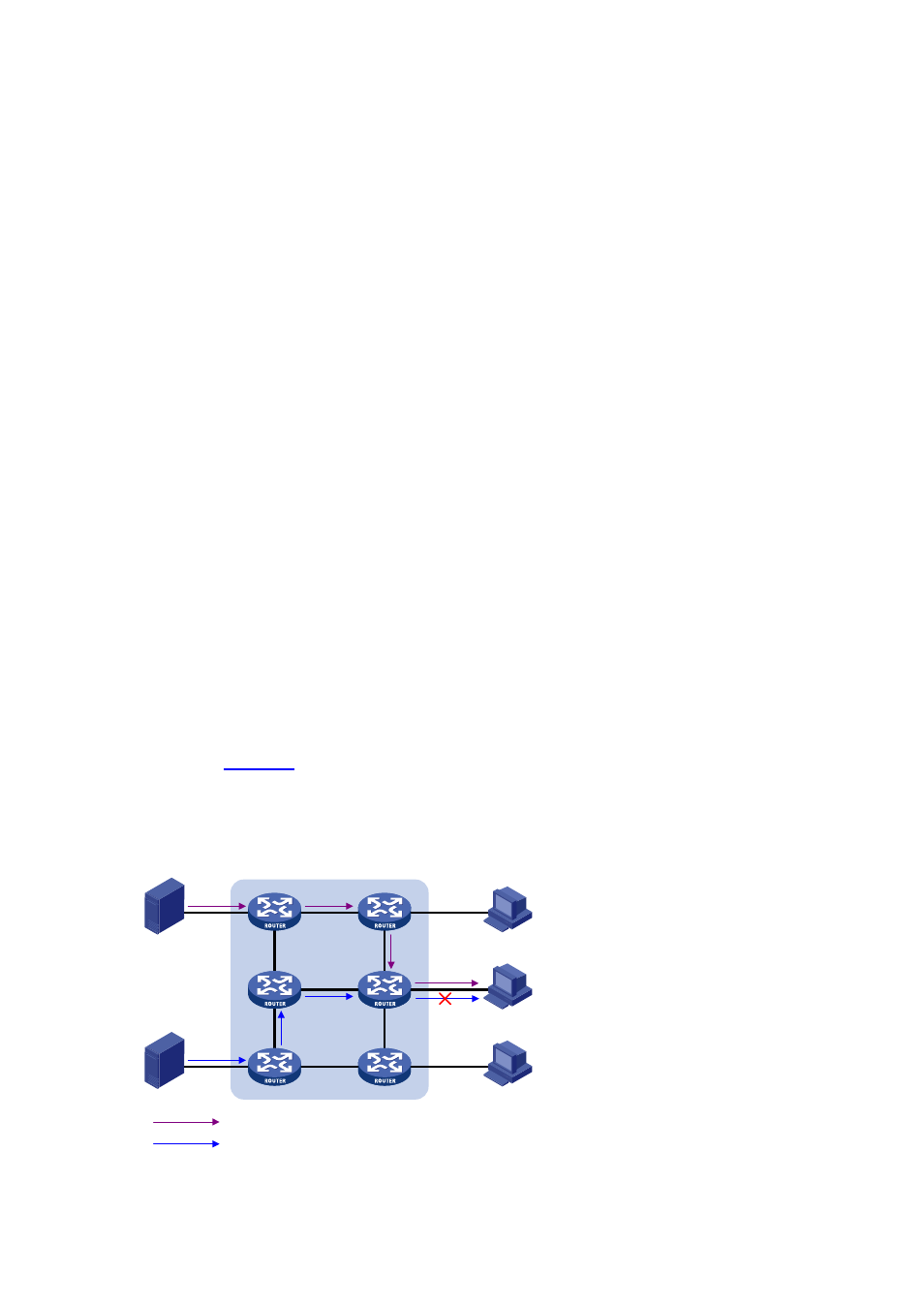Leaving an ipv6 multicast group, How mldv2 works, Ipv6 multicast group filtering – H3C Technologies H3C S7500E Series Switches User Manual
Page 324

12-4
Leaving an IPv6 multicast group
When a host leaves a multicast group:
1) This host sends an MLD done message to all IPv6 multicast routers (the destination address is
FF02::2) on the local subnet.
2) Upon receiving the MLD done message, the querier sends a configurable number of
multicast-address-specific queries to the group being left. The destination address field and group
address field of the message are both filled with the address of the IPv6 multicast group being
queried.
3) One of the remaining members, if any on the subnet, of the group being queried should send a
report within the time of the maximum response delay set in the query messages.
4) If the querier receives a report for the group within the maximum response delay time, it will
maintain the memberships of the IPv6 multicast group; otherwise, the querier will assume that no
hosts on the subnet are still interested in IPv6 multicast traffic addressed to that group and will
stop maintaining the memberships of the group.
How MLDv2 Works
Compared with MLDv1, MLDv2 provides the following new features:
IPv6 multicast group filtering
MLDv2 has introduced IPv6 multicast source filtering modes (Include and Exclude), so that a host can
specify a list of IPv6 multicast sources it expect or does not expect IPv6 multicast data from when it
joins an IPv6 multicast group:
z
If it expects IPv6 multicast data from specific IPv6 multicast sources like S1, S2, …, it sends a
report with the Filter-Mode denoted as “Include Sources (S1, S2, …).
z
If it does not expect IPv6 multicast data from specific IPv6 multicast sources like S1, S2, …, it
sends a report with the Filter-Mode denoted as “Exclude Sources (S1, S2, …).
As shown in
, the network comprises two IPv6 multicast sources, Source 1 (S1) and Source
2 (S2), both of which can send IPv6 multicast data to IPv6 multicast group G. Host B is interested only
in the IPv6 multicast data that Source 1 sends to G but not in the data from Source 2.
Figure 12-2 Flow paths of multicast-address-and-source-specific multicast traffic
Source 2
Receiver
Host A
Host B
Host C
Packets (S1,G)
Packets (S2,G)
Source 1